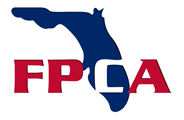Current Environment for Florida Schools
A look at the public and private school sector in Florida shows that there are 14,605 public and private schools in Florida. With over 55% of students in those schools falling into low-income families, its more important than ever to provide school facilities that can help support the children who use them. Precast is the right choice for schools so they can focus less on constructing new facilities and more on the students that need their help.
Why is Precast the Right Choice for Florida Schools?
Accelerated Schedules
Schools often have shorter, more aggressive schedules than other projects. Facilities are only left unoccupied for several months throughout the year and schools want construction to be completed as quickly as possible. Precast construction is not affected by weather like traditional methods and can quickly be installed onsite. In the event that construction needs to happen at the same time students and teachers are on site, precast requires minimal laborers to erect and causes less disruption to daily activities.
Storm Shelters/Weather Events
Precast school structures can have dual-purpose by providing a safe space for students to learn while also acting as a storm shelter for its surrounding community. Precast inherently addresses FEMA requirements such as wind ratings so schools looking to apply for FEMA grants to help with new constructions don’t have to worry about using another construction material other than precast.
LEED/Sustainability
Sustainability is quickly becoming a major issue for new school constructions and rehabilitations. Precast can help maximize a school building’s thermal efficiency and lessen its environmental impact without sacrificing aesthetics. Designers can also use precast to help them achieve sustainability goals such as LEED certifications.
Architectural Precast can match Historic Schools
With tight budgets and a want to keep their historic identity, historical schools tend to choose additions to existing school buildings over building completely new structures. Precast can be manufactured to match existing building elements such as color and texture while still providing a modern solution. Formliners, color and texture options, inlays, and other aesthetic options open a variety of architectural solutions for schools to achieve a seamless appearance for their additions.
Fire Resistance
A primary concern of schools is protecting their occupants from dangerous situations including fires. Precast is inherently fire resistant and can be designed to keep fires from spreading. It also does not rely on any other systems such as sprinklers in order to provide protection.
Security
Precast can help schools provide security to its occupants through design options such as long site lines and secure access points. Depending on the specific needs of a school facilities, precast can be designed to cater to security needs and provide an impenetrable construction product.
Athletic Facilities
One of the most important parts of a school tends to be its athletic facilities. Whether its needed indoor or outdoor, precast can handle both the human and natural elements that athletic facilities usually face. Precast has been used in school athletic facilities across the country and has done exceptionally well in all types of climates and locations.
Urban Environments
Traditional building styles often require large laydown spaces which simply does not work with some urban school construction sites. Precast can help alleviate this issue by manufacturing components off site and having them arrive at the site ready to erect. This means staging areas are drastically reduced in size and cause less disruption to both schools and their surrounding neighbors in urban environments.
Life Cost Analysis
Long-term benefits are just as important as short term benefits to schools. Precast offers schools many long-term cost saving benefits such as lower maintenance costs and reduced heating/cooling costs throughout the life of the building.
FPCA Producer Projects
Christopher Columbus High School
Galaxy School
SLAM Charter School
Venice High School









